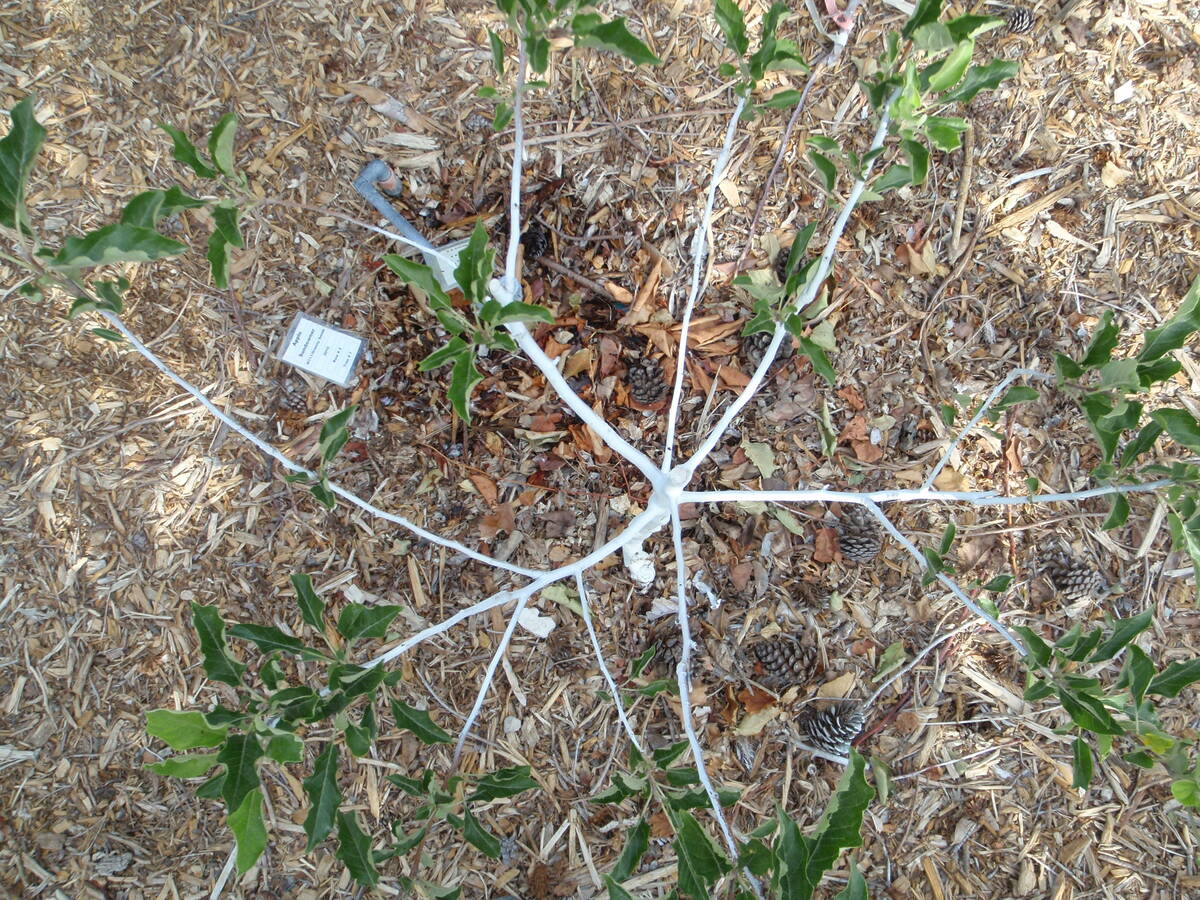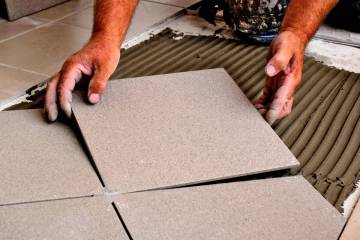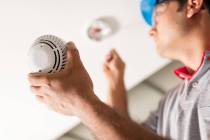Compost produces steam — even in cold weather
When compost is warm, it produces steam. It may look like it’s hot but during this cold weather, steam is very commonly found with warm compost. The temperature of compost when it’s cooling is only about 105 degrees. The center of the pile might be hotter, but it’s not hot enough to damage plants.
Q: I just bought a standard pink lady fruit tree from a local nursery. How should I prune it when it’s young?
A: From your picture, it looks like you planted a fruit tree from a 5-gallon plastic nursery container. I sure hope it’s not a standard size but grafted onto an M111 rootstock. There may be two tags on the tree; one tag tells which variety it is (e.g., Pink Lady), and the second tag tells you the rootstock.
M111 rootstock is a semi-dwarfing apple-only rootstock that allows the tree, unpruned, to grow to about 20 feet tall. If left on its own roots, apple trees will grow to 30 feet or more. M111 rootstock allows you to prune it lower than 20 feet.
When pruning a young fruit tree, figure that about 90 percent of your pruning efforts are focused on developing its structure the first year. After the second year in the ground, the focus is balanced about 50/50 between structure and fruit production. The third year in the ground and years after, the focus shifts more towards fruit production: 90 percent on fruit production and only 10 percent making any corrections to the tree structure.
The first year of pruning establishes five major limbs coming from the trunk. These branches should radiate from the trunk, starting at about knee height, in different directions like spokes on a wheel. These major branches, called primary scaffolds, should come from the trunk at different heights up to about 3 or 4 feet for a 10-foot-tall tree. Major scaffold limbs are spaced 12 to 18 inches apart.
One central and upright branch should extend from the top of the trunk to form the central leader. This central leader, an extension of the trunk, is pruned when it reaches between 5 and 6 feet in height on a 10-foot-tall tree.
Last year’s branches are pruned no longer than about 18 inches in length. A well-pruned young tree should allow sunlight to filter toward the trunk above and below each scaffold limb. These scaffold limbs will ultimately support smaller limbs that will carry the fruit. Fruit development should occur all through the tree canopy.
If you’re going to keep your fruit tree no more than 10 feet tall, then eventually prune it to 8 feet in height during the winter. The summer growth increases the canopy size to about 10 feet in height. The next year lower it again to 8 feet and allow it to grow to 10 feet.
Q: I would appreciate your opinion on how best to irrigate my raised bed vegetable garden. Right now, it uses sprinklers.
A: Make the switch from sprinklers to drip irrigation. Drip irrigation is more efficient at delivering water than sprinkler irrigation and applies this water directly to the roots, at the same spot, each time.
I prefer to use half-inch drip irrigation tubing with the emitters embedded in the sidewalls. Its life expectancy, as opposed to drip tape, is more than 10 years. Most drip irrigation tubing is either brown or black with ultraviolet light inhibitors added to the plastic. This means drip tubing, unlike PVC, can be left exposed to sunlight for many years without degrading.
When the drip tubing is installed, the drip emitters are facing up to reduce plugging. Drip tubing itself is spaced about 12 inches apart, in rows, with the embedded drip emitters triangulated from each other so they distribute water more evenly to the soil.
A ball valve is located where water enters the drip tubing so that the water can be turned on or off. A flush valve is located at the point farthest away. The flush valve is simply another ball valve but located at the opposite end of the bed.
This flush valve is needed for cleaning the drip tubing after installation, repairs and on a regular basis. Along with monthly flushing of the drip tubing, the screen in the filter is also cleaned.
Q: How often do I add compost to my raised bed? When is this done? How much do I need to buy?
A: I use the color of the soil to tell me if more compost should be added to the soil of a raised bed. Compost adds organic matter to the soil, and this addition of organic matter makes the soil a darker brown in color. Normally a half-inch of compost every year and mixed with the soil to a depth of 6 to 8 inches is enough.
But that is only half of what you need to do. Organic additions to the soil like compost may do two things: improve the structure of the soil (make it more “fluffy”) and add plant nutrients to the soil. All additions of organic material (compost, coir) improve the soil’s structure. But not all additions are rich in plant nutrients.
Compost made from animal or human manure is usually the richest in plant nutrients. If you are vegan, then compost made with lots of green and fruiting vegetables and green leaves are the best.
You can’t look at organic amendments and know if they are rich or not. The only thing that tells you are the color of the leaves and the growth of plants.
Soil amendments rich in plant nutrients cause the leaves of plants to turn dark green and increase their growth. After plant growth in your soil will tell you very quickly if your soil amendment was rich or not. When in doubt, use a small amount of fertilizer until you are sure.
Q: I am planting a passion fruit vine near a wall that only gets spring, summer and fall sun. Or does a passion fruit vine need year-round sun?
A: If it gets morning sun for a few hours it should be fine. During the winter months, it requires less sun than in the spring, summer and fall.
On our family farm in the Philippines, passion fruit vine is a weed that climbs into anything nearby. It is a tropical plant and doesn’t tolerate temperatures much below freezing. In our Las Vegas climate, the major problem is winter cold temperatures so it must be protected from wind and cold any time temperatures approach freezing.
The second major issue to passion vine is damage from our afternoon sun. Passion vine, when it’s grown in the desert, should be grown on the east side of a building with afternoon shade necessary for it to flourish. The soil growing passion vine should be amended with compost and covered in woodchips.
A third issue is irrigation. Two irrigation rings of drip tubing, 3 feet in diameter and 6 feet in diameter, with 1 gallon per hour emitters spaced about 12 inches apart, should do the trick. This plant needs watering three times a week (possibly four times per week during extreme heat) in the summer.
Enough minutes should be used to get water to a depth of 18 inches deep each time it’s irrigated. If you have an existing irrigation schedule, a third irrigation ring may be necessary to get the water deep enough.
Q: When my mother passed away, I was given her snake plant. Potted and covered, I kept it outside during the winter in Las Vegas. The plant was in bad shape after that fiasco, so I brought it indoors. I have it outdoors in the shade until recently. Is it too hot for it at temperatures above 80 degrees in the summer? What can I do to speed growth and see new shoots? How often to water?
A: Snake plant, also called Sanseveria or mother in laws tongue, is one of the hardier indoor plants provided it has what it needs. However, the best temperature range for it is between 90 degrees and 40 degrees. Plant damage may occur at temperatures below 45 degrees, but it will survive temperatures to freezing.
It will appreciate the bright desert sun for only a couple of hours during the early morning, but after that, it should have filtered light. It can withstand temperatures to 95 degrees but not in direct sun. The months to best to grow snake plant outdoors would be from early March until about the first part of May and then again in the fall starting at the end of September through the middle of November.
Since it is a tropical succulent, it can withstand slightly dry soil. Growth is on short rhizomes. Fertilizing the plant with a high phosphorus fertilizer lightly once every two months will cause it to grow most rapidly when temperatures are between 60 and 80 degrees. Cold temperatures cause the leaves to begin to roll or cup.
Bob Morris is a horticulture expert and professor emeritus of the University of Nevada, Las Vegas. Visit his blog at xtremehorticulture.blogspot.com. Send questions to Extremehort@aol.com.





























